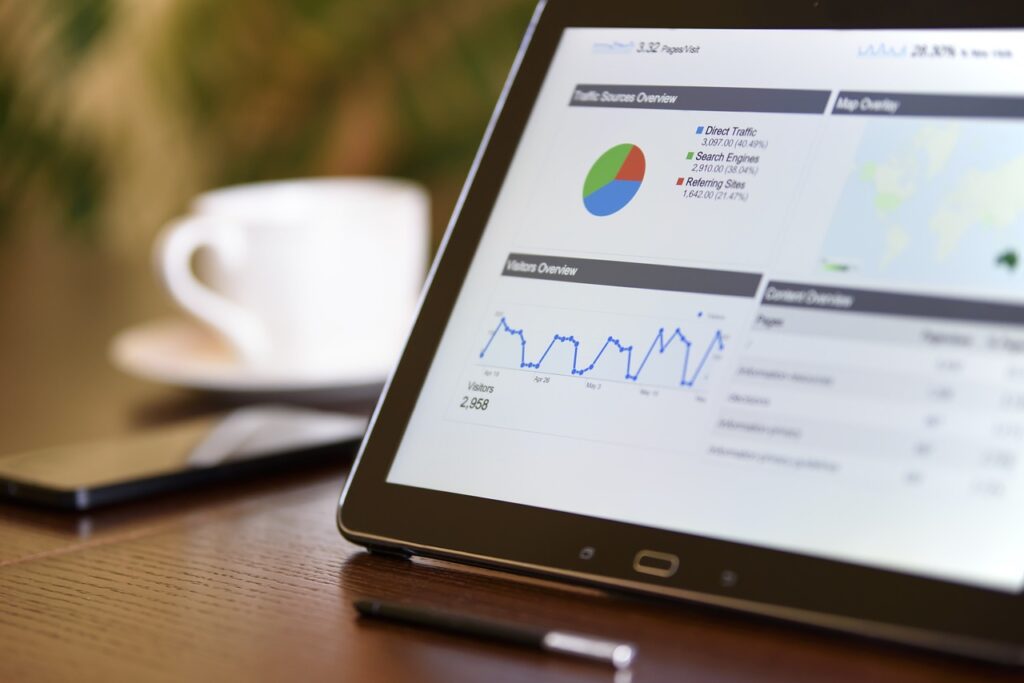Do you want a different way of building links using statistics web pages? I put together these 5 strategies to build you links in no time. Let’s get started…
Strategy 1 – Leverage “journalistic keywords” when writing about the data featured on statistics pages
This will help you craft compelling headlines and stand out from other bloggers who are covering similar topics.
Specifically, I mean that you should focus your efforts on long-tail keywords that aim to gather data.
Remember a long tail keyword is simply a phrase that is more specific than a broader keyword.
For example, rather than targeting the broad term “building links,” you might choose to target something like “statistical analysis of building links.”
This will allow you to know what journalists are looking for as they are getting their written pieces together.
If you manage to put out a piece of super valuable statistically inclined content together, there is a better chance you will get the link, as opposed to emailing 1000 people begging for a backlink.
To find statistically related long tail keywords all you need to do is:
– Head over to Google AdWords or a similar keyword tool
– Enter your main long tail keywords and see what additional suggestions come up
Another way is to Google “keyword + statistics” or “hiking + statistics”
Another great way to find long-tail keywords is to look at the “People Also Asked” section.
This is the section that shows up after you do a search and Google thinks it knows what you might be looking for.
Using the example keyword “building links,” one of these suggestions could be “statistics building links.”
Strategy 2 – Use the power of your subscriber list to your advantage
If you have a large subscriber list, and you want to gather a specific statistic, all you need to do is email your subscriber list a survey
Here is a good email template to use:
“Dear Subscriber,
We are conducting a research project on building links using statistics pages, and we need your help!
If you have a few minutes to complete this survey, it would be greatly appreciated.
The results from this survey will allow us to better understand how to use statistics web pages as a tool for building links.
Thanks in advance for participating – your input is invaluable to our research!”
Just a reminder, always continue to increase your subscriber list! in addition to bringing more eyes to your content, it is an amazing leverage tool(including link-building)
Another big benefit to having a large subscriber list is building brand awareness and building trust with your readers, which can also lead to more backlinks.
Here are the top things to remember in order to increase your subscriber list:
– Offer valuable and consistent content on your blog or website, which can help to build trust with your audience.
– Engage with your readers through social media and email, building relationships that will encourage them to subscribe.
– Make sure that you have easy ways for people to sign up for your subscriber list, whether through a pop-up signup form, a welcome mat at the top of your site, or another method.
Strategy 3 – Show your data in images and graphics
The visual power of images is undeniable. If your data can be shown in numbers AND images, it will go a long way in being looked at for possible backlinks.
Here are a couple of important things to remember when converting your data into graphics or images:
– Make sure the graphics are large and easily viewable. This will help ensure that journalists who might want to use your images don’t have any problems accessing them
– Always include relevant attribution, such as a caption and/or watermark, so that you get credit for your hard work!
To correctly add images to your blog posts remember to:
– Use the proper image formats for sharing on social media.
– Always optimize your images for SEO, including adding descriptive alt tags and ensuring that your image file names are relevant.
– Don’t forget to add a compelling caption that pulls in readers. This is also an opportunity to include a call-to-action or CTA, such as a link to your website or subscription form
Another quick tip I can recommend for your statistic-related images is to add arrows pointing to the number you want to highlight in your text about the image.
The best color for arrows in your images is usually red, as this is a color that immediately draws the eye and directs attention to the important information.
Strategy 4 – Create individual posts for each statistic you created content around
There may be dozens or even hundreds of statistics in your content, so it can be tough to decide which ones deserve their posts.
One effective strategy is to create a “master post” that includes links to all the other posts you created around each statistic.
This way, journalists who might want to link back to specific data within your original piece have a central place where they can easily find what they need.
Here is a quick example of what a master post should look like:
Master post title: “5 Powerful Statistics About Link Building Strategies”
– Includes short summaries of each statistic, along with links to the corresponding posts.
– Can be further broken down into categories for easy navigation and browsing.
– Includes any other relevant content such as infographics or images that might pop up during your research.
– Incorporates keywords and other SEO best practices to ensure that it is easily discoverable online.
– Includes a prominent call-to-action or another way for readers to sign up for your subscriber list, building more awareness and acquiring potential backlinks down the line!
Always remember the “3 click rule” which basically means that you want your content to be easy for people to find and consume. No page should be more than 3 clicks away from one other.
Strategy 5 – Create a top 50 list blog post specifically for statistics
Another effective way to get more backlinks to your content is by creating a “top X list” post that includes all the statistics you gathered.
This type of post will often generate lots of interest from bloggers and journalists who are looking for interesting data-related content, so make sure you target this audience from the beginning!
The top things to remember as you compile your list include:
– Keep the list as comprehensive as possible, while still being coherent and easy to digest
– Include a range of statistics, rather than just focusing on a few that you want to promote
– Consider using numbered lists or infographics when presenting your data. These are typically more engaging than plain text and can help drive traffic to your post.
As always, make sure you are going through your “on-page optimization checklist”.
Don’t have one? here is an “on-page optimization checklist” you can use:
– Ensure that your blog post title is clear and SEO-friendly, using keywords naturally throughout
– Include a concise and engaging introduction that captures the reader’s attention right away
– Optimize your content for readability by adding headings, subheadings, bullet points, and other formatting elements to break up the text.
– Include relevant internal and external links throughout the post, including to other statistics pages within your site and to other reputable sources.
– Pay attention to keyword placement in titles, headings, subheadings, and body copy. This will help improve your SEO ranking and drive more traffic to your post.
– Use a strong SEO plugin to help optimize your content for search engines and ensure that all elements of on-page optimization are included.
Well, that’s it! I hope you both enjoyed and get to use this post, till next time!






 Which developer has the highest salary?
Which developer has the highest salary?